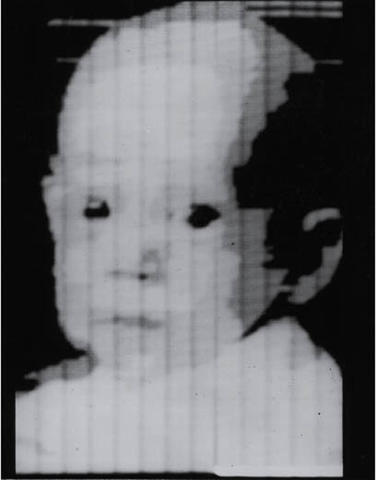First Digital Image
Date: 1957
The field of image processing was kickstarted at NBS in 1957 when staff member Russell Kirsch created the first ever digital image.

It was a grainy image of a baby—just 5 centimeters by 5 centimeters—but it turned out to be the well from which satellite imaging, CAT scans, bar codes on packaging, desktop publishing, digital photography and a host of other imaging technologies sprang.
In 1957 NIST computer pioneer Russell Kirsch asked, "What would happen if computers could look at pictures?" and helped start a revolution in information technology. Kirsch and his colleagues at NBS, who had developed the nation's first programmable computer, the Standards Eastern Automatic Computer (SEAC), created a rotating drum scanner and programming that allowed images to be fed into it. The first image scanned was a head-and-shoulders shot of Kirsch's three-month-old son Walden.
The ghostlike black-and-white photo only measured 176 pixels on a side—a far cry from today's megapixel digital snapshots—but it would become the Adam and Eve for all computer imaging to follow. In 2003, the editors of Life magazine honored Kirsch's image by naming it one of "the 100 photographs that changed the world."
Kirsch’s son Walden—whose face helped launch the era of computerized photography—works in communications for Intel following a successful career as a television news reporter.

